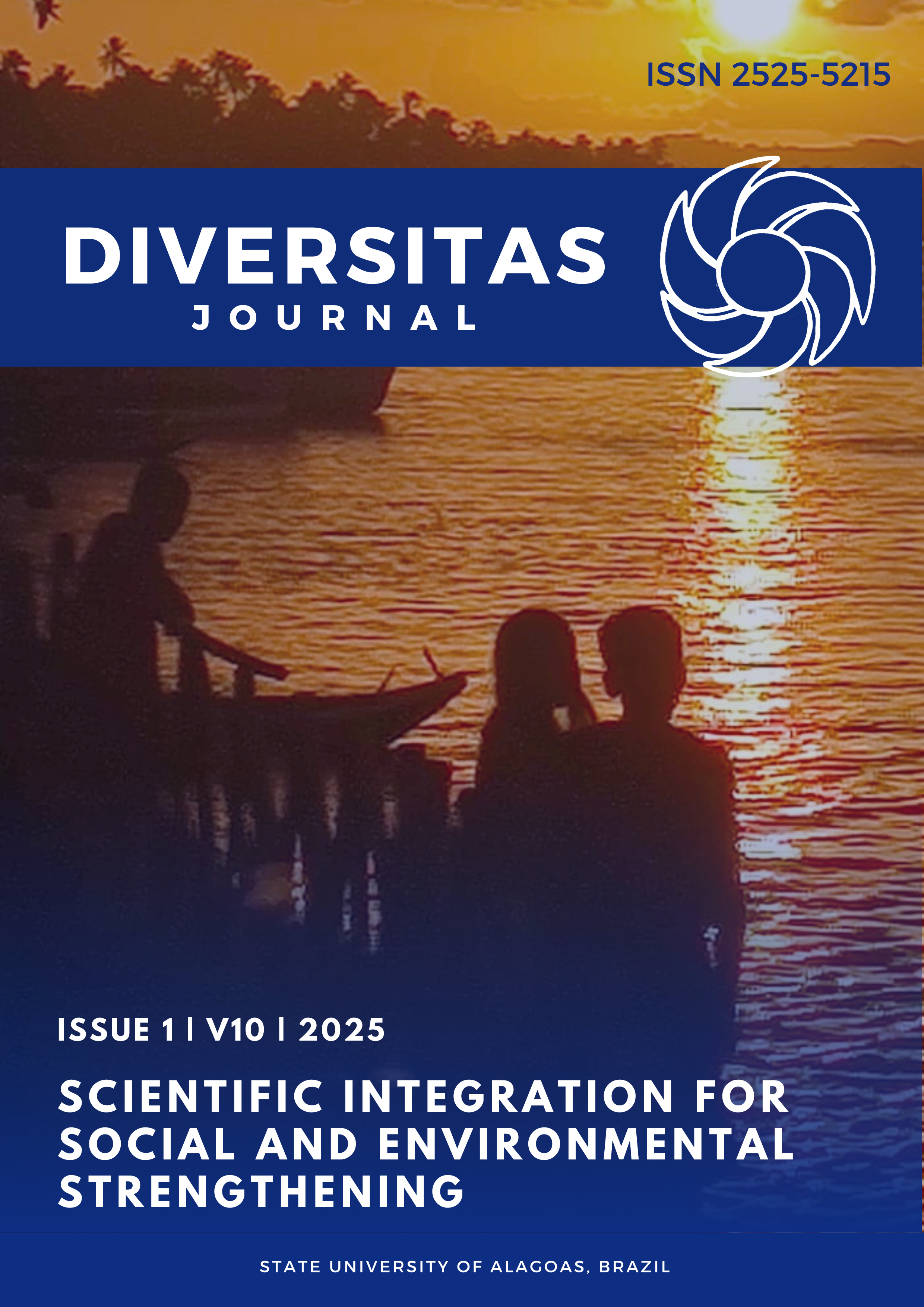The euphoria of the real estate market in Maceió after the socio-environmental disaster caused by Braskem
DOI:
https://doi.org/10.48017/dj.v10i1.2806Keywords:
Subsidence of soil, Mining, Forced displacementsAbstract
After the case of Maceió city, which is facing subsidence (sinking) of soil in at least 5 neighborhoods, due to the unrestrained exploitation of rock salt by Braskem, the real estate market, which had been cooled by the national economic scenario and showed a timid recovery in 2019, after the initial apprehension with the pandemic decree in early 2020, it saw an upward curve of appreciation with the advance of payments of financial compensation, the result of an agreement signed between the company, the Public Ministry and Public Defender. This article aims to analyze the reactions of the real estate market, both in the rental and the sales market, to verify the fulfillment of the real housing demands of the population affected by the disaster. Reports from APSA, Panoramas of the Real Estate Market released by Sinduscon and FipeZAP Indices were consulted, observing numbers of property launches, offers, sales, leases, and available types. As a result, there is an immediate increase in rental prices, followed by an increase in the price per square meter. However, attention is urged to an exponent supply of one-bedroom apartments, which does not respond to the demand arising from commuting.
Metrics
References
Alvarez, I. (2015). A produção e reprodução da cidade como negócio e segregação. In: A. F. Carlos, D. Volochko, I. P. Alvarez (eds.), A cidade como negócio (pp. 65-79). Contexto.
Botelho, A. (2007). A produção do espaço urbano como estratégia do capital. In: A. Botelho, O urbano em fragmento: a produção do espaço e da moradia pelas práticas do setor imobiliário. Annablume, Fapesp.
Ministério Público Federal. (2020). Termo de acordo para extinguir a ação civil pública socioambiental. http://www.mpf.mp.br/al/arquivos/2021/Acordo_ambiental.pdf
Braskem. (2023). Sítio Braskem Alagoas. https://www.braskem.com.br/alagoas
Cavalcante, J. (2020). Salgema: do erro à tragédia. Cesmac.
Câmara Brasileira da Indústria da Construção. (2017). Indicadores imobiliários nacionais. https://cbic.org.br/wp-content/uploads/2017/11/Indicadores_Mobiliarios_Nacionais_2017.pdf
Corrêa, L. (1989). O espaço urbano. Editora Ática.
Diagonal Social. (2021). Diagnóstico Técnico-Participativo do Plano de Ações Sociourbanísticas. https://maisdialogos.com/documentos
Diagonal Social. (2022). Documento Técnico Complementar ao Diagnóstico PAS - Parte I. https://maisdialogos.com/documentos
FIPEZAP. (2023). Índice Fipezap de Locação Residencial.
Fix, M. (2007). São Paulo cidade global: fundamentos financeiros de uma miragem. Boitempo.
França, L. (2019). ONG Movimento pela Vida era contra a instalação da Salgema em área povoada: vários setores da sociedade alertavam para riscos que empresa representava. Tribuna Hoje. https://tribunahoje.com/noticias/cidades/2019/06/08/73026-ong-movimento-pela-vida-era-contra-a-instalacao-da-salgema-em-area-povoada
Harvey, D. (2014). Cidades rebeldes: Do direito à cidade à revolução urbana. Selo Martins.
Leal, S. R. (2017). A retração da acumulação urbana nas cidades brasileiras: a crise do estado diante da crise do mercado. Cadernos Metrópoles, 19(39), 537-555. http://dx.doi.org/10.1590/2236-9996.2017-3908
Mendes, J. (2016). A dignidade das pertenças e os limites do neoliberalismo: catástrofes, capitalismo, Estado e vítimas. Sociologias, 18(43), 58-86. https://doi.org/10.1590/15174522-018004303
Normande, E. (2000). Apoio à proteção ambiental: Uma experiência de Cooperação técnica. Seplan, IMA.
Lopes, A., & Junqueira, E. (2005). Habitação de interesse social em Maceió. IBAM/DUMA.
Quarantelli, E. (2015). Uma agenda de pesquisa do século 21 em ciências sociais para os desastres: questões teóricas, metodológicas e empíricas, e suas implementações no campo profissional. O Social em Questão, 18(33).
Segen, J. C. (2002). Technological disaster. McGraw-Hill Concise Dictionary of Modern Medicine.
Sindicato da Indústria da Construção do Estado de Alagoas. (2019). Censo do Mercado Imobiliário 2019.
Sindicato da Indústria da Construção do Estado de Alagoas. (2020). Censo do Mercado Imobiliário 2020.
Sindicato da Indústria da Construção do Estado de Alagoas. (2021). Censo do Mercado Imobiliário 2021.
Sindicato da Indústria da Construção do Estado de Alagoas. (2023). Censo do Mercado Imobiliário 2023.
Vassileva, M., Al-Halbouni, D., Motagh, M., Walter, T. R., Dahm, T., & Wetzel, H-U. (2021). A decade-long silent ground subsidence hazard culminating in a metropolitan disaster in Maceió, Brazil. Scientific Reports, 11(1), 146-42. http://dx.doi.org/10.1038/s41598-021-87033-0
Vieira, L. (2019). Audiência Pública: Instituto do Meio Ambiente do Estado de Alagoas IMA/AL. Brasília: Câmara dos Deputados.
Downloads
Published
How to Cite
Issue
Section
License
Copyright (c) 2025 Caroline Gonçalves dos Santos, Gustavo Figueiredo Lima , Inara Querino de Mendonça, Júlia Amorim Bulhões, Mirella Murta Gomes

This work is licensed under a Creative Commons Attribution 4.0 International License.
The Diversitas Journal expresses that the articles are the sole responsibility of the Authors, who are familiar with Brazilian and international legislation.
Articles are peer-reviewed and care should be taken to warn of the possible incidence of plagiarism. However, plagiarism is an indisputable action by the authors.
The violation of copyright is a crime, provided for in article 184 of the Brazilian Penal Code: “Art. 184 Violating copyright and related rights: Penalty - detention, from 3 (three) months to 1 (one) year, or fine. § 1 If the violation consists of total or partial reproduction, for the purpose of direct or indirect profit, by any means or process, of intellectual work, interpretation, performance or phonogram, without the express authorization of the author, the performer, the producer , as the case may be, or whoever represents them: Penalty - imprisonment, from 2 (two) to 4 (four) years, and a fine. ”















.png)




